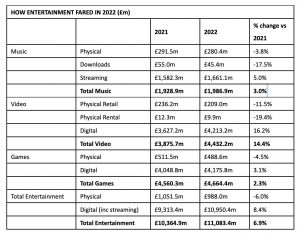When we see a vinyl we immediately connect it to the last century, as the first support designed for listening to reproduced music. It was in fact 1931 when RCA (Radio Corporation of America) presented the first 33 rpm in history. This so small (for the time) but so innovative object marked the transition from monophonic to stereophonic technology, allowing the listener to enjoy long-lasting pieces.
The following version, the 45 rpm one, had an average duration of a few minutes per side and was therefore more suitable for listening to short tracks of so-called pop music. In the second half of the 1900s, however, vinyl was supplanted by another even smaller and more manageable medium, the compact disc (CD), which relegated vinyl to a niche product and for enthusiasts, both in terms of cost and the type of use of the music (the large format compared to the CD didn’t make it portable).
In recent years however, starting from the beginning of the new decade, against all expectations vinyl has taken its revenge on the CD, experiencing an increase in sales not only in America but also in Italy and England. Now we analyze the reports compiled by the various companies which, in the three countries mentioned, study the data concerning the number of annual music sales. They are respectively: the RIAA (Recording Industry Association of America), the FIMI (Federation of the Italian Music Industry) and the ERA (Entertainment Retailers Association).
RIAA
Although it was a difficult period for the music industry due to the pandemic, 2020 was a year of earnings for the US recording industry if we consider that there was an increase of + 9.2% compared to the previous year, for a total of 12.2 billion dollars.
The majority of revenues come from subscriptions to paid music streaming services. Among the most popular we mention Spotify, Apple Music and Amazon Music but also on-demand services that are subsidized thanks to commercials such as Vevo, YouTube or digital radios such as Pandora or SiriusXM. All this resulted in a growth of 13.4% for a total of 10.1 billion dollars in 2020.

As far as physical products are concerned, for the first time in more than thirty years, the profits obtained from the sale of vinyls are far greater than those of CDs. In fact, vinyl grew by +28.7% with revenues equal to 626 million dollars; the CD instead saw its earnings decreased by -23% with a total of 483 million dollars, thus embarking on the path of decline.

FIMI
In 2021 the world record market grew by +18.5% with a total amount of 25.9 billion dollars. Italy doesn’t lag behind, indeed after five years of absence it returns to the top 10 of the most important markets, with a profit of +27.8% which translates into over 332 million euros in revenues.
Subscriptions to music streaming platforms are the engine that drive the market with a +35.6% growth. It’s estimated that in a week, Italian listeners make an average of over a billion streams. In 2021, in fact, Italians spent 19 hours a week listening to music, especially the group of subscribers ranging from 16 to 24 years old. The video streaming sector (which earns through advertising) and the sales of Italian music abroad also had a strong impact on this positive trend.
Also in Italy the phenomenon whereby vinyl prevails over CD is taking hold, obtaining a +79% increase in earnings. Revenues from other formats that are back in vogue are also increasing, such as cassette tapes (+245%). The CD, on the other hand, only gets +10.6%. It’s also thanks to incentives such as the Bonus Cultura 18 App that the Italian audio media market is reinvigorating.
ERA
In the UK, music sales in 2022 increased by 3% to almost £2 billion and reached the highest level since 2003. ERA CEO, Kim Bayley says: “we’re approaching a watershed. Thanks to the investment and ingenuity of streaming services on the one hand and brick-and-mortar retailers that have spearheaded the vinyl renaissance on the other, music is on track to surpass £2 billion in retail sales value for the first time in more than two decades. Music has to be great to get people’s attention, but it’s the buying and consuming experience that ultimately convinces people to put their hands in their pockets.”
Sales of music on physical media have been boosted by the release of albums that achieved worldwide success in a very short time such as Taylor Swift’s “Midnights” and Arctic Monkeys’ “The Car” but also releases by Cliff Richard and Andrea Bocelli on the occasion of the Christmas holidays (time of the year favorable for increasing sales and consequently also earnings). Taylor Swift’s “Midnights” sold over 89,000 copies in just two months after its release, becoming the best-selling vinyl of 2022. Harry Styles’ “Harry’s house”, on the other hand, remains the best album in both physical and digital formats.
Despite vinyl being more expensive than CD, sales rose by 11% to £116.8 million while those of the rival fell by -17.4% to £98.3 million. The success of vinyl can be explained by the loyalty of fans and music support enthusiasts. In addition, the vinyl format, compared to the CD, is more exclusive and for real collectors. So listeners, even if they have to spend more, prefer to have a rarer and more niche product than the CD or the audio file. However, the main driver of earnings growth remains music streaming from major services such as Spotify, YouTube, Amazon and Apple Music. Subscription revenue is up +5% in a year to £1.66 billion.

In a phase of recovery of the music sector and the industry related to it, what will be the prospects for this year that has just begun? Will vinyl continue to prevail over CD and will music streaming platforms still be the most used or will we face new changes within this ever-changing market?

Graduated in modern literature at the Alma Mater Studiorum in Bologna, I am graduating from the master’s faculty of journalism and communication, because writing has always been what I do best. I wish I could combine business with pleasure and therefore reconcile writing with music, my greatest passions.
